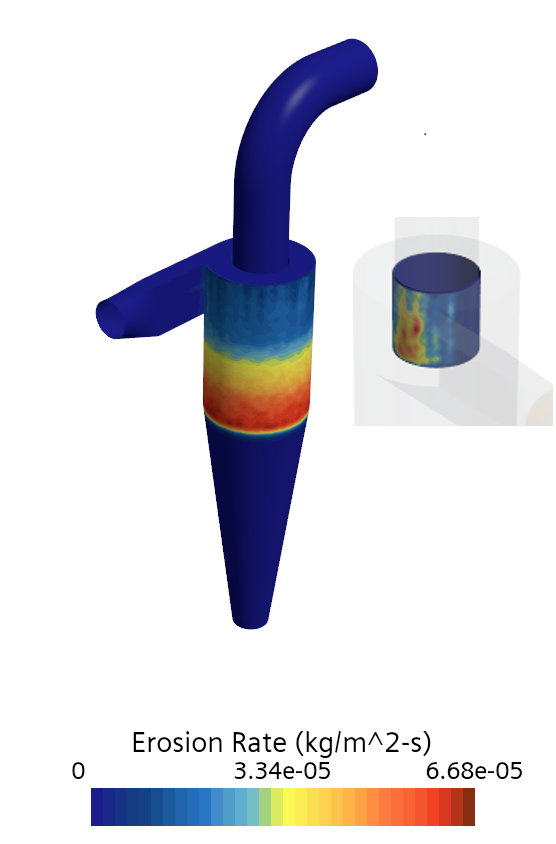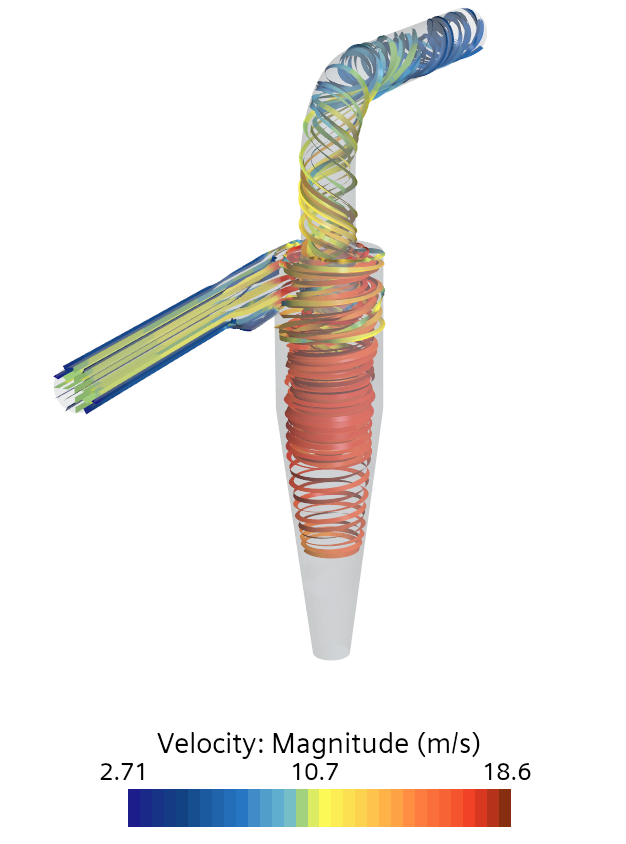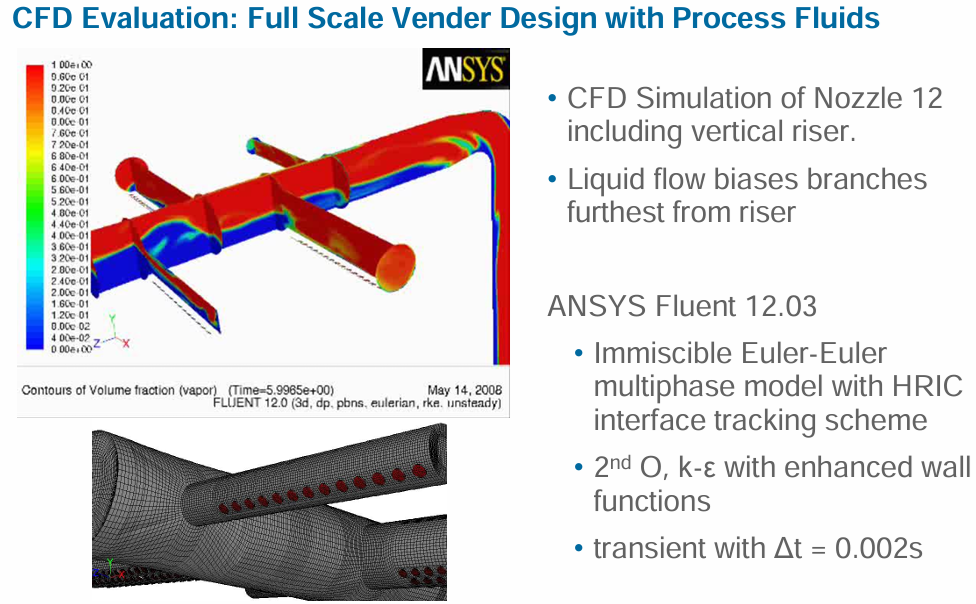Industrial Applications
If modeling fluids are involved, we are interested. Our experience is built from creating one-off models for new designs, troubleshooting old designs and investigating root cause of performance issues. Below are some sample simulations completed as replicas of previous work. At the bottom of the page you find a short list of other models developed.
Solid-Liquid-Vapor Model: Slurry Release to Purging Vessel With Water Separation
This model represents one used to determine the cause of downstream pressure fluctuations and limited flow in a vent header line. A simulation was created as shown, and another with our determined solution (extra breather holes in the water pan). The additional air flow eliminated the pressure fluctuations and no longer limited flow in the vent header.
Turbulent Sourced Pressure Fluctuations Due to Dead Leg
This is an example of a simulation used to investigate pressure fluctuations caused by a dead-end tee. STARCCM+ provides excellent visualization tools to help determine the necessary mesh refinement to capture the frequency of the pressure oscillations expected (from experimental measurements).
Grid Refinement Method to Reduce Cell Count While Capturing Necessary Physics
The simulation above is one of the STARCCM+ tutorials showing the process of mesh refinement. This particular simulation refines the mesh based on the gradient of Mach Number, greatly reducing the cell count while capturing the necessary physics. Typical applications include droplet breakup due to liquid Tee entries, liquid surface modeling, and modeling of high pressure relief valves when capturing shocks.
Particle Tracks and Erosion Prediction on Coke Separator Downstream of Ethylene Cracking Furnace
This is an example of one of many erosion studies completed. The original simulation showed heavy wear in the location of the vessel requiring repeated repair. Different separation vessel styles were modeled to find the most appropriate design. The particle sampling from collector located at the base of the vessel had a unique size distribution: a subset of particle sizes were not present, though larger and smaller particles were present. Using drag calculations for pipe flow, it was shown where these particles collected upstream.


Multiphase Header Design (CFD) and Experimental Validation
This image is taken from a presentation I gave at the 2014 Spring Meeting & 10th Global Congress on Process Safety (119d) Conference. The presentation was entitled: Evaluation and Testing of a Two Phase Feed Distributor. Using the flow regime mapping method discussed on the Software webpage, an air-water system was determined to allow for experimental testing with matched multiphase flow characteristics for a two Phase Feed Distributor design. The resulting design was necessary as part of the debottlenecking initiative. I used stratified flow momentum equations to design a header that resulted in considerably improved flow distribution to each arm of the distributor, thus feeding the trays more uniformly.
Additional Applications
- Compressor wash oil trajectories and evaporation rate using CFD flow and temperature predictions to calculate with Python the evaporation time for dispersed phase and resulting performance of wash oil (successful impact with the wall).
- CFD modeling of ethylene cracking furnace (terrace style with crossovers) with burner vendor to ensure final design (out of manufacturers warranty) provided ideal flux over cracking tubes without wall impingement or corner effects.
- Design of water injection system to cool effluent in optimized distance while preventing impact of cold temperatures against pipe (reducing overall requirement of high-priced pipe material).
- Use of flow regime prediction techniques to scale process conditions to air-water system for experimental analysis and validation of multiphase flow CFD data to determine root cause of fouling.
- Investigation of process changes leading to increased fouling for fluidized bed reactor post shutdown.
- Simultaneous fluidized bed reactor shutdown performance during a sitewide power failure: prediction of timing and identification of bed regions prone to coagulation, necessitating high-risk methods for product removal.
Additional Applications
- Python solver to predict transient temperature of pipe wall at multiple locations and thicknesses alongside critical & choked multiphase flow through orifice during filling process in extreme environmental temperatures.
- Machine Learning to identify source of pressure spikes on pipeline.
- Machine learning and statistics to identify operational source of solvent leaking through base of purge bin to downstream equipment.
